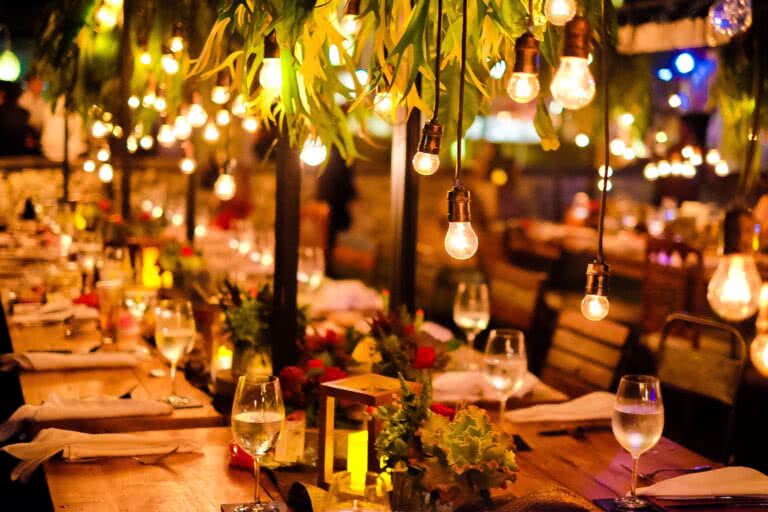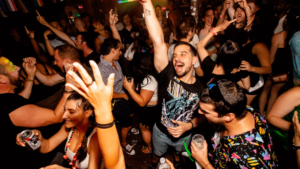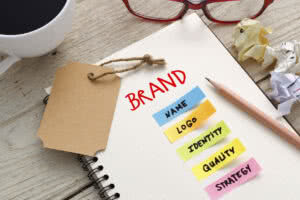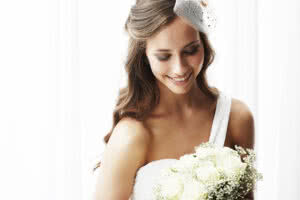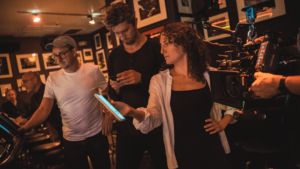Indoor event lighting is not often top of the list for corporate event planners. But it should be, according to Neil Walker, Production Director at MGN Events.
In his view, event lighting solutions are key to the success of the event. Lighting creates atmosphere and gives the professional edge that some events lack. But it is often an area that people find difficult to get right.
Here are Walker’s top tips to make sure your event lighting creates an impact and provides the wow factor that you’re looking for.
Design your lighting plan
Think about where you want to put your key lighting points and which parts of the venue are most important in terms of atmosphere and lighting. You’ll need to work with your wider events team to understand where the action is taking place.
A site visit is recommended, so that you can get an idea of the size of the venue, where light fixings may need to go, what rules the venue has regarding use of fixings on the walls or ceilings, and to understand where the power points are.
Consider your lighting kit
Most modern conference room lighting control systems are LED-based. But there are still some venues that may use traditionally installed lighting rigs. Your kit should consist of a variety of types of lights used in events, including uplighters and spotlights. When combined by a lighting designer, these can transform even the blandest venue.
Spotlights
The key focus is obviously the stage, and that needs to be lit accordingly. Venues often have their own basic lighting systems – but in order to add a professional look and atmosphere to your event sound and lighting, ensure that all speakers are appropriately lit on stage with spots, and that the audience space is darker and more ambient.
The plenary space should be lit in a colour that doesn’t detract from any presentations taking place on stage – a Congo Blue is often a good option here. However, make sure that the audience lighting is at a level that allows audience members to make notes if they want to.
Stage or colour washes
Wash lighting is used to fill a space with light and colour. On a stage, it can be used to light up the space. It can also be used if you have an exhibition space in one area that you want to highlight. Colour washes can echo your corporate colours, or just be plain white light.
Uplighting
Uplighters are ground-based lights that can be used to light specific features, such as pop-up banners or signage. Again, they can be used very effectively in different colour combinations to add more atmosphere to an event.
Modern uplighters are battery-powered, removing any worries about wiring or trip hazard issues. This means that, as long as it’s safe, they can be used in areas that wouldn’t have been accessible or would have been considered dangerous with older wired fixtures.
Obviously, as part of your planning, you need to ensure that all equipment, wireless or not, is placed in a sensible and safe position.
Venue lighting effects
If you really want to make the most of lighting at your next corporate event, then think about effects that can impress an audience.
Gobos are lights that beam your corporate logo or patterned designs into your event space. Gobos can be static or moving, or they can fade in and out.
If you are holding an evening drinks event, then you can use them to project light patterns onto the ceiling to create a magical feel in a room. Alternatively, for a more formal corporate event, you can simply take your logo (or the event hashtag) and project it onto the venue walls. If you want to create a light show, you can do this by using moving Gobos.
Think hard about your colour scheme
Your lighting doesn’t have to be plain white. It can easily reflect your corporate identity and brand colours as well as create dramatic announcements with attention-grabbing cued lighting. Colour also allows you to differentiate zones within the event space itself and is great for helping people find where they need to be. After all, it’s much easier to ask a guest to head over to the “Green Zone” for networking events than ask them to follow the signs.
Using different coloured uplighters and washes can also set the mood for each part of the event. This can work well for day-to-evening transitions if your attendees are staying on for drinks and networking.
Coordinate with your video recording team
If you’re working with a film or video company to record the day’s proceedings, it’s worth ensuring that your lighting people liaise with them over their lighting requirements for filming. They’ll want to ensure that they film a good recording of the event, and that there are no dark spots when watching the recording back. This may mean making some adjustments to your original plan to ensure that you have the right light for video recording.
Set up an intelligent lighting system
All of your event lighting can be pre-programmed if you use an intelligent lighting system to adjust your lighting accordingly. This will give you the ability to effortlessly change your lighting throughout the event, enabling the day to flow seamlessly.
You can use your lighting plan to signpost attendees through speaker times, awards, comfort breaks, and any other key sections that need highlighting. Intelligent lighting also offers you the ability to change lighting states, colours, and intensities for areas that need attention – such as the showing of a VT during a conference.
Take your event lighting to the next level
If you’re planning an experiential event and want to take your corporate event lighting to the next level, it’s relatively straightforward to link your sound and light systems together so that they can “talk” to each other.
Here are some creative examples of how to really add the wow factor to a presentation or launch:
- Use a simple hashtag. When tweeted by someone at an event, it can be picked up, processed, and outputted in the form of a siren or sound alert as a video starts playing.
- Link music to your lighting as you change its colour from white to green.
- Use projection mapping for a really futuristic feel. This involves taking a plain 3D object (such as a vehicle) and projecting live animation and moving graphics onto its surface, bringing the object to life. The real key to projection mapping is the design. Spending time planning and designing the map will deliver incredible results. Remember, that to make the best use of projection mapping, you need to get the rest of your lighting right first.
Shine a light on your ideas
Good event lighting for indoor events can be set up around any size or budget. Think about what you want to do first, then talk to your venue and get advice from a lighting designer. You’ll find that even the simplest event lighting packages, like whimsical fairy lights, can impress your guests if they’re done well.
Got your corporate event plan ready? Set yourself up for success with our simple registration software.
